Tell us about your approach to photography. How it all started? What are your memories of your first shots?
Lars Heidemann (LH): I have always been sort of interested in photography since I was a child. In high school I did some experimenting with my dad’s old SLR camera (East-German Exa 1c) for an art project. After that I used a little digital point-and-shoot camera a lot, but I was not really happy with the results. When I was about 20, I bought a used Canon EOS 300D which really got me deeper into the world of “real photography”. At that time I shot mostly landscape and architecture. About three years ago I started buying many different analog cameras and switched completely from digital to film. Then I shot mostly street photography, which I still love doing when I am visiting large cities. But here in North-Eastern Germany, where I live and spend most of my time, I find that street shooting is very hard to do, because there are not many cities. So my interest shifted towards other types of 20th century and contemporary fine art photography.
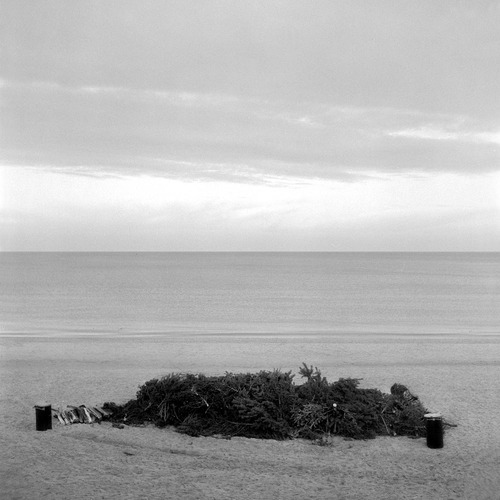
© Lars Heidemann from the series 'Quadratus', 2013
How did your research evolve with respect to those early days?
LS: I have always been more of a practical person, so what I have learned over the last three years is mostly self-tought. The internet as a great source for information on photography and its history helped me to learn about both technical and aesthetic aspects of photography. I think not only has my research improved in the matter of amount and deepness, but also the Internet is constantly improving and providing more and more great blogs, websites, documentaries and so on. And of course there are many great photobooks, which I learn a lot from.

© Lars Heidemann from the series 'Color', 2013
Tell us about your educational path. You are attending the Caspar-David-Friedrich-Institute. What are your best memories of your studies. What was your relationship with photography when you started?
LH: I am actually a student of English, History and Education, but I spend half of my time with photography. At the beginning of last year I had the chance to get to know Heiko Krause, who is the teacher for photography at the CDFI of the University of Greifswald. He had a look at my portfolio and liked it, so I was given the opportunity to attend courses and participate in a trinational photography project in Zingst, Germany.
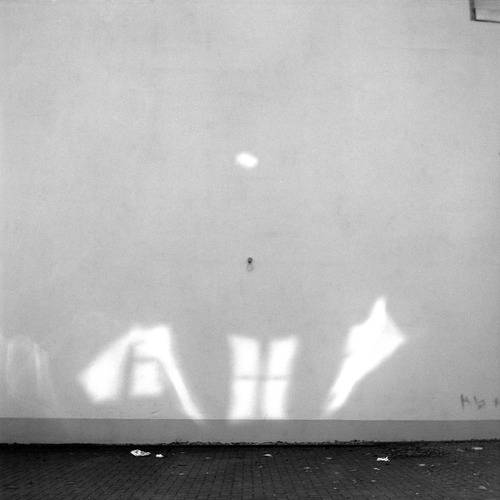
© Lars Heidemann from the series 'Quadratus', 2013
What were the courses that you are passionate about and which have remained meaningful for you?
LH: What I like about courses and projects in general is that one has to focus on a specific topic and work really efficiently in order to get good results in the end. Often, there is a strict time factor as well, which adds more pressure on the photographers / students. This can be really productive and efficient. What I enjoy the most is looking at other students’ work and having them look at mine. Talking and criticising each other’s work is a very important learning factor and is often very inspiring. This is something that you do not get working all by yourself.

© Lars Heidemann from the series 'Beyond Suburbia'
Any professor or teacher that has allowed you to better understand your work?
LH: That would be Heiko Krause, whom I mentioned above. He has always some good pieces of advice that improve my technical and artistic skills in many different ways. Besides, his own photographic work is a great inspiration for me.

© Lars Heidemann from the series 'Beyond Suburbia'
You are also darkroom assistant at University of Greifswald, tell us about this experience.
LH: I started this job only in October 2013, but so far it has been a great experience. Probably the best part is to see students develop their first roll of film or making their first print. The look in their eyes when “the magic happens” is priceless.
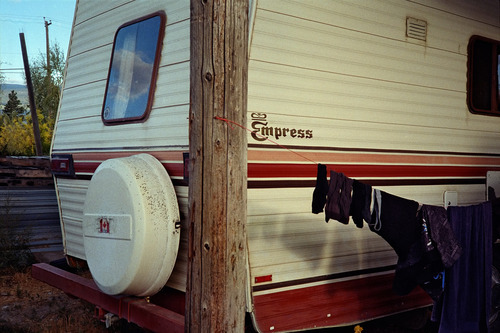
© Lars Heidemann from the series Canadiana, 2011-2012
About your work now. How would you describe your personal research in general?
LH: In general I look at all kinds of photography from its very early days until today. I try not to make a difference if a photographer is well known or not. But I think there are many great “classic” photographers that one cannot get around. One thing that I think is a great step forward towards seeing unknown and upcoming photographers are online photography blogs. They really open up a whole new dimension for people doing research on photography.
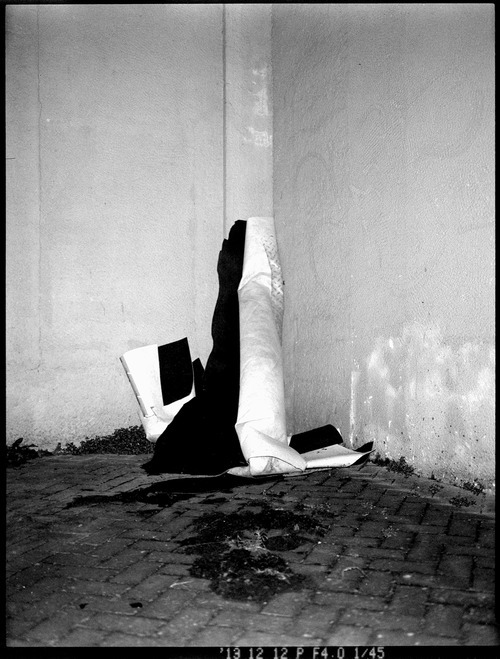
© Lars Heidemann from the series Blitzlicht, 2014
Do you have any preferences in terms of cameras and format?
LH: I own and use all kinds of analog cameras from little point-and-shoots, 35mm rangefinder and SLR cameras to different medium format cameras (6x4.5, 6x6, 6x9) and Polaroid cameras. Currently, I use a Fujifilm GA 645i and a Canon EOS 3 with different old Zeiss lenses the most. For medium format I use mostly expired ORWO NP20 black-and-white film and with my Canon I shoot Kodak TMax 400.
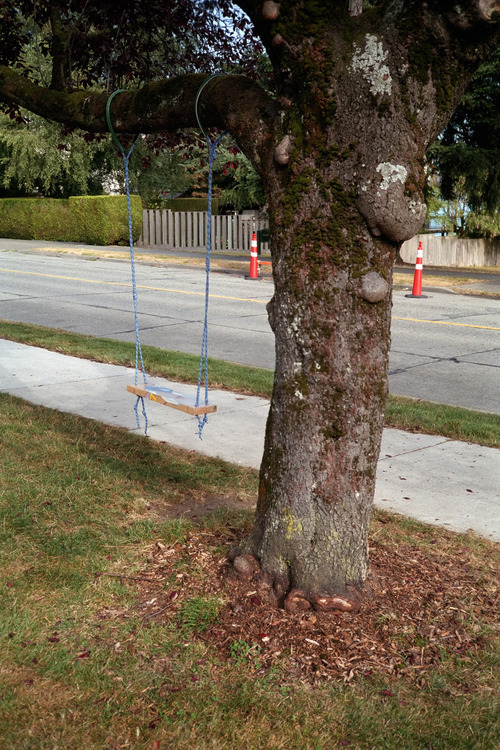
© Lars Heidemann from the series Canadiana, 2011-2012
Tell us about ‘Quadratus’?
LH: This on-going series consists of only square format black-and-white pictures that were all taken with an old Chinese Seagull TLR and expired ORWO film. There is a certain aesthetic and calmness in square format that I really like. Also the work with a TLR camera itself is very calming. This series differs from my other work, because I did not really set a topic for it. It is more of a personal study of the square format.
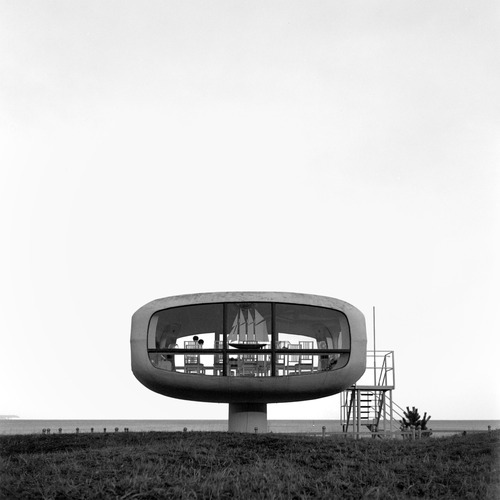
© Lars Heidemann from the series 'Quadratus', 2013
Is there any contemporary artist or photographer, even if young and emerging, that influenced you in some way?
LH: There are many photographers whose work I admire. One would definitely be William Eggleston, who has an exceptional view on colours, composition and the world. Also Saul Leiter and Alec Soth are two very inspirational photographers.
Three books of photography that you recommend?
LH: 'Broken Manual' by Alec Soth, 'American Photographs' byWalker Evans, 'Bilder' by Werner Bischof.
Is there any show you’ve seen recently that you find inspiring?
LH: One of the last shows I have seen was an exhibition with photographs by Helmut Newton in Berlin. I had not seen a lot of his work before so this was very nice to see.
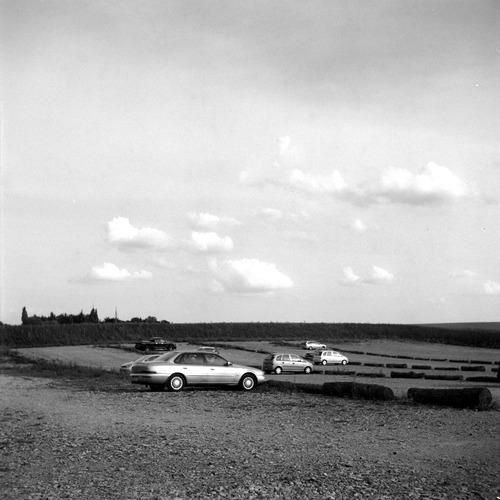
© Lars Heidemann from the series 'Quadratus', 2013
Projects that you are working on now and plans for the future?
LH: I am still working on my “Project: Uckermark” series. This is a long-term project about a region and its people in the northeast of Germany. It is a fairly rural region which many people move away from, because there is no work and no prospect for them. I hope at some point in the future I will be able to make a book of this series.
---
LINKS
Lars Heidemann
Germany
share this page